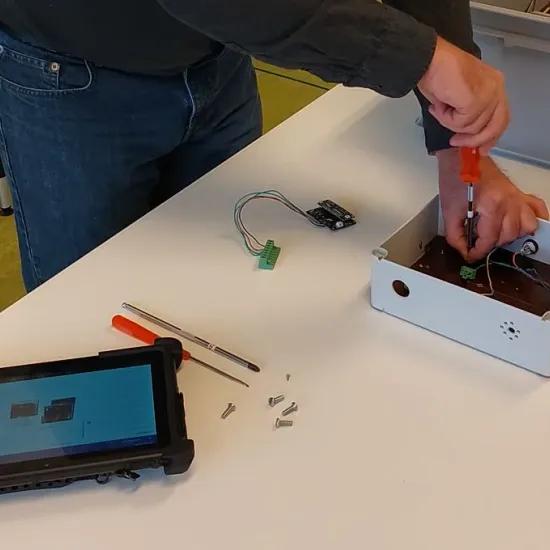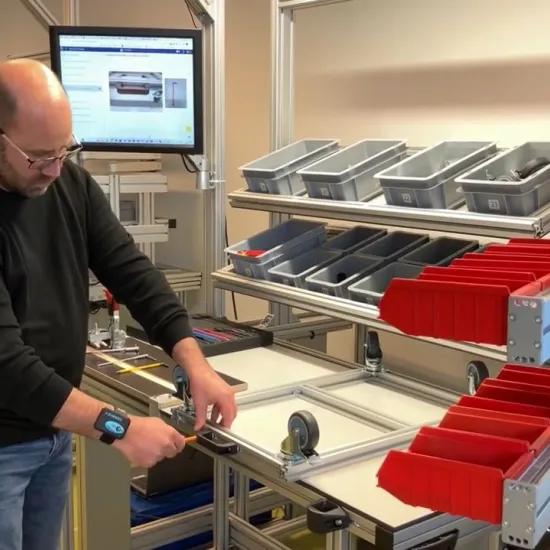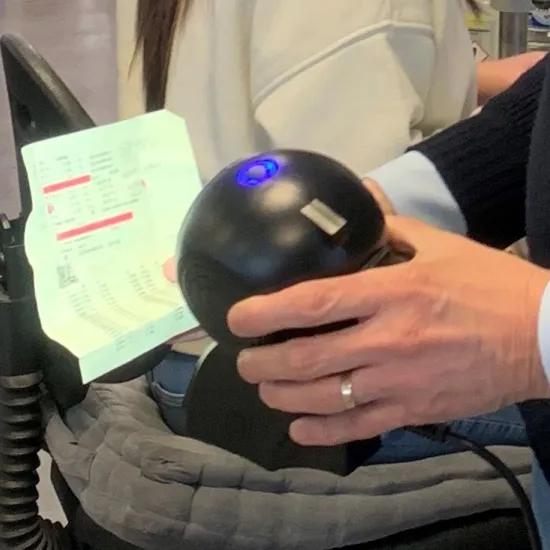Cross-training of employees is a crucial activity for companies that want to reduce their lead time. Despite the many advantages there is often some hesitation to apply it. Digitising work instructions opens up a whole host of new possibilities, such as paperless activities, accurately measurements and monitoring and a considerable reduction in the chance of making mistakes.
Importance of cross-training
Cross-training of employees is a crucial activity for companies that want to reduce their lead time. The impact of cross-training is underestimated by many companies. However, crosstraining has a lot of advantages. Employees can more easily assist in busy places. Successive process steps can be carried out by one person, which reduces the number of handovers and the associated waiting time between process steps. Cross-training stimulates process improvement, because several employees look at the tasks from different perspectives. Cross-training also improves teamwork. Through cross-training, team members can help each other making them also feel jointly responsible.
Despite the many advantages of cross-training, there is often still some hesitation to focus on cross-training. Are they not going to make too many mistakes because they are not used to the work? Will the cross-trained employees be productive? Sometimes there is some fear among the employees as well: will I be able to do the new task as well as my colleagues? What if I make mistakes? Digitising work instructions opens up a whole host of new possibilities, making training and cross-training a lot easier, and at the same time greatly reducing the chance of making mistakes.
Advantages of digital instructions
Digitising work instructions offers a number of obvious advantages. The instructions are up to date and new prints no longer need to be made last-minute. The instruction can be loaded effortlessly on the basis of a job number or scan code, or there is a direct link with the ERP/MES system so that the operators do not waste time looking up the correct work instruction.
The modern tools make it possible to present instructions with animations based on 3D model data from the design department. If desired, the operator can interactively navigate in the 3D data to view certain details or request more information about certain parts. Of course, the correct tools with the correct settings (e.g. tightening torque) and safety instructions can also be displayed. In addition, there are extensive possibilities to easily create new instructions for product variants or design changes based on templates or existing work instructions.
The video below illustrates the possibilities of digital work instructions where the operator receives the instructions using animated 3D CAD models.
However, digitising the work instructions goes much further than replacing paper, but opens up a wealth of new possibilities:
- Many digital work instruction systems make it possible to enter measured values and to tick checklists as having been performed and checked. In this way, quality can be assured and audits can be carried out easily.
- Report function: some systems (or modules) allow the operator to report errors, formulate comments to improve the work or suggest design changes.
- Measuring production times: if one goes through different screens before the execution of a job, one can also keep track of the times, and thus gain a better insight into the time per production step.
- Process control/quality assurance: by scanning the job and operator, it is possible to keep track of which operations were performed by whom on which product (this can be related to a serial number, for example). Defects can thus be traced, which can lead to better guidance of the operator (further training) or design changes.
- Some systems allow authorisation to certain persons depending on the type of document (assembly instruction, quality checklist, catalogue, ...), release status, etc.
Applications
Digital instructions are most appreciated for jobs where errors or omissions are difficult to exclude, such as complex assembly operations, jobs where the sequence of operations is critical, operations where the tool settings must be correct or when specific safety or quality actions must be followed, when there is a large product variation due to extensive options, ...
Even in companies with more or less standard products, but seasonal production capacity or rotating occupancy, digital work instructions are valuable as a training tool. Another application lies in assembly or maintenance work 'in the field'. The work instruction then becomes an electronic instruction booklet on a mobile device.
Technological possibilities
A digital work instruction tool consists of two modules, possibly supplemented with further modules. In the editing module, the scenario of the entire job is drawn up with the desired views and animations for each step, supplemented with notes, tools, warnings, piece names., .. In the viewer, the instructions are displayed. Additional modules may or may not be required for additional functionalities such as instruction videos, link with CAD/PLM systems, time measurements, operator feedback (reporting), link with a production planning system, …
The instructions are typically displayed on fixed or mobile (touch) screens. Some systems have a completely different interaction with the operator, for example based on image projection directly on the workplace or with smart glasses. The use of smart glasses is specifically useful when the operator does not have a fixed workstation and needs to be able to move around. This is, for example, the case for warehouse operations. The Belgian company Smartpick developed a solution for this.
The most advanced systems will observe the operator directly via cameras and can provide feedback based on this. These systems can also prevent tools from being activated if, for example, the operator wants to tighten the wrong bolt. Such systems offer unprecedented possibilities to guarantee the quality of manual work. For the operators, these systems can also provide reassurance. They no longer have to worry about making mistakes. After all, there is a computer that looks over their shoulders and draws their attention to problems.
Some systems such as Smart Klaus also automatically save photos of the work delivered.
Tool providers
There are many commercial players active in the field of digital work instructions. Some of them are specialist providers: Azumuta and Proceedix and Ezfactory. There are also companies that focus on the easy creation and availability of work instructions, such as Manual.to and Swipeguide. The providers of MES systems also provide possibilities to easily display instructions and technical information.
Examples of work instruction systems with cameras that monitor progress are: Arkite, Light Guide System, Ansomatic and Smart Klaus.
In addition to these tools, the providers of CAD systems have also developed specific tools that make it easier to create work instructions based on the design drawings. Examples are tools such as SolidWorks Composer, Creo Illustrate, Delmia Manufacturing Work instructions, …
Need some help?
The Interreg project QRM4.0 supports production companies in improving their lead times by providing practical advice and granting financial support to companies that want to take steps to implement digital tools on their shop floor. Would you like to know more? Contact us.
]]>




